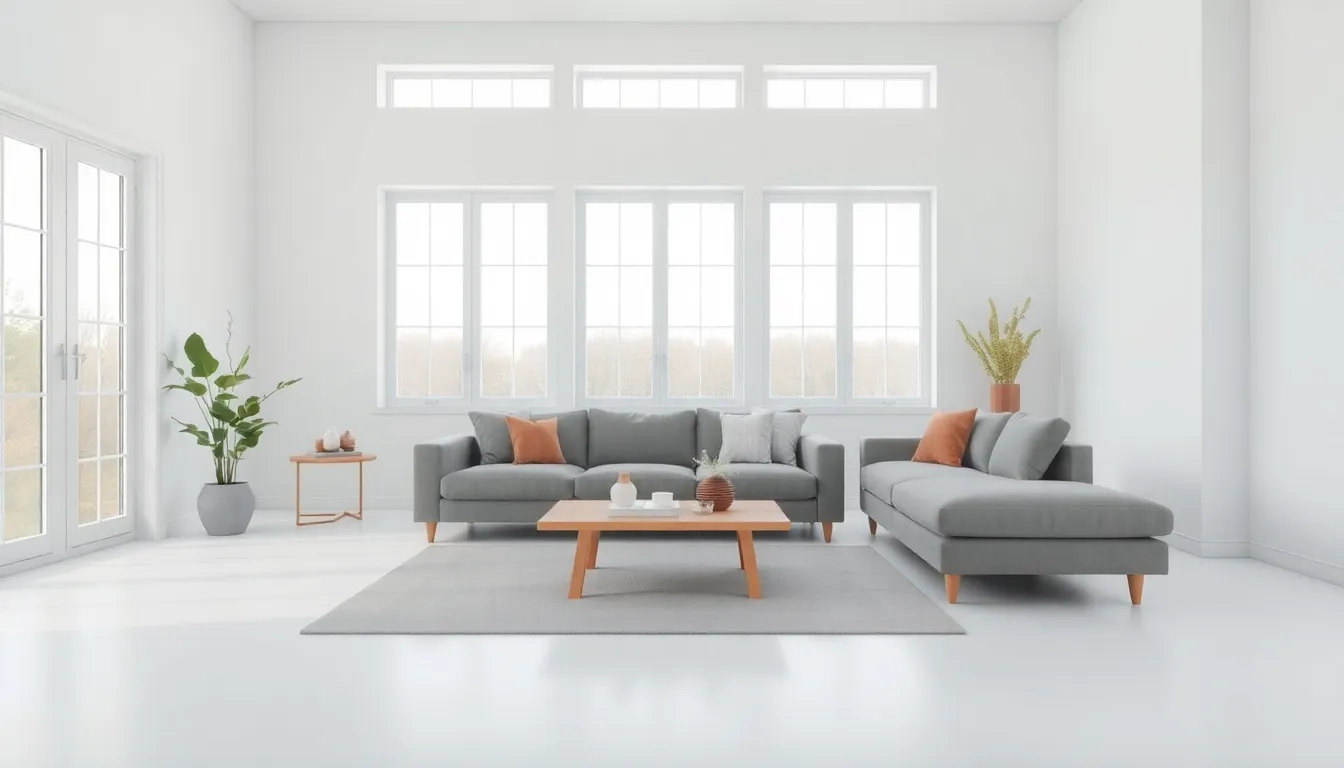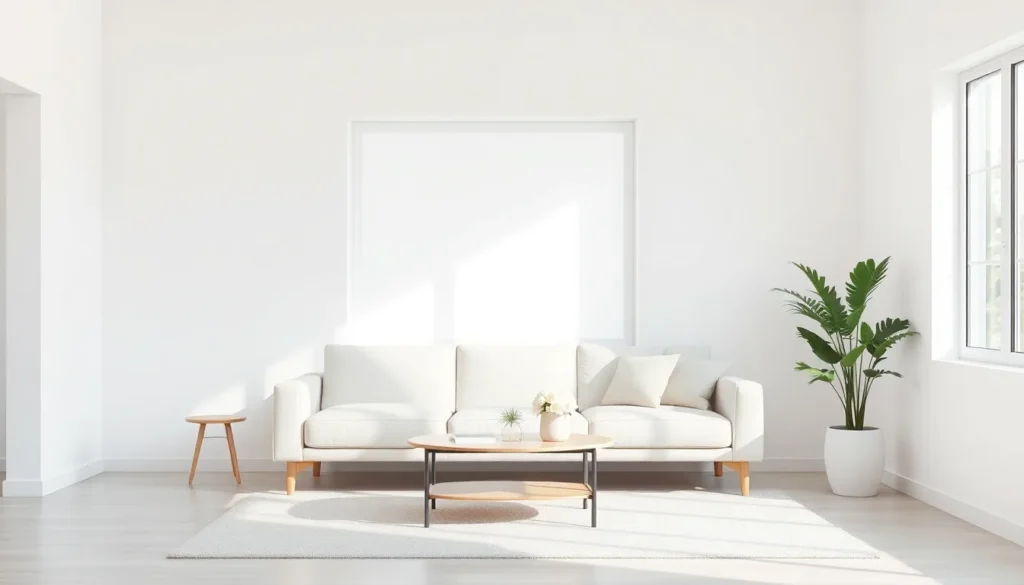Table of Contents
ToggleIn a world bursting with distractions and clutter, minimalist living room design offers a refreshing breath of fresh air. Imagine stepping into a space that feels like a serene oasis rather than a chaotic jungle of furniture. It’s not just about having fewer items; it’s about creating a sanctuary that invites relaxation and sparks joy.
Understanding Minimalist Living Room Design
Minimalist living room design emphasizes simplicity and tranquility, encouraging an uncluttered aesthetic. This approach transforms spaces into serene, inviting environments where each item holds significance.
Key Principles of Minimalism
Simplicity drives minimalist design, focusing on essential elements that enhance functionality. Neutral color palettes create cohesion, with whites, grays, and earth tones fostering calm. Functional furniture ensures every piece serves a purpose, minimizing excess. Thoughtful placement allows for open space, enhancing movement and promoting relaxation. Lastly, natural light plays a crucial role, illuminating a minimalist living room, enhancing its airy feel.
Benefits of Minimalist Living Spaces
Reduced stress levels emerge as fewer possessions create visual clarity. Simplified cleaning routines result from fewer items, saving time and effort. Increased focus occurs, as distractions diminish in uncluttered spaces. Financial benefits arise through mindful purchases, preventing unnecessary spending on non-essential items. Finally, enhanced creativity fosters an environment where individuals can think freely without the chaos of clutter.
Essential Elements of Minimalist Living Room Design

Minimalist living room design centers on simplicity and functionality. Essential elements promote tranquility and an uncluttered aesthetic, leading to a peaceful atmosphere.
Furniture Selection
Choosing the right furniture stands as a crucial aspect of minimalist living room design. Functional pieces such as sleek sofas and simple coffee tables contribute to the space’s overall coherence. Prioritizing comfort, select items that serve multiple purposes, like an ottoman with storage. Avoid elaborate designs; opt for clean lines that enhance the minimalist theme. Limiting the number of furniture pieces prevents overcrowding, making the room feel more spacious and inviting.
Color Palette and Lighting
A neutral color palette works wonders in minimalist living room design. Soft shades like whites, grays, and beiges create a calm backdrop. Incorporating pops of color through accessories adds personality without overwhelming the space. Maximizing natural light plays a vital role in maintaining an airy atmosphere, so consider sheer curtains that allow sunlight to flood in. Strategically placed lighting fixtures, such as floor lamps and recessed lights, complement the room’s simplicity, enhancing its overall aesthetic.
Creating a Minimalist Living Room
Creating a minimalist living room involves careful planning and a focus on essential elements. This design approach fosters a serene and uncluttered atmosphere.
Layout Considerations
Prioritize open space when arranging furniture. Position larger pieces against walls to maximize floor area. Use area rugs to define zones, creating a sense of structure. Consider flow; ensure pathways are clear and unobstructed. Incorporate multifunctional furniture, such as ottomans with storage or coffee tables that double as workspaces. Each layout choice contributes to a cohesive design.
Decorating with Purpose
Select decor items with intention. Every piece should evoke emotion or serve a functional role. Incorporate artwork that resonates, but limit the number to avoid visual clutter. Choose plants that enhance air quality and add a touch of nature. Accessories in the same color palette unify the space. Balance simplicity with personal style to create warmth while maintaining minimalism. Each choice reinforces the tranquil essence of the room.
Common Mistakes to Avoid
When designing a minimalist living room, certain mistakes undermine the desired aesthetic. Recognizing these pitfalls ensures a serene and functional space.
Overcrowding the Space
Overcrowding disrupts the minimalist philosophy. Cluttering surfaces with too many items detracts from the calming effect of minimalism. Create open areas to enhance the sense of space. Fewer furniture pieces promote better flow and accessibility. It’s essential to keep only necessary items on display, ensuring each piece holds significance. Emphasize quality over quantity when selecting decor. A well-considered approach leads to a more inviting atmosphere.
Ignoring Functionality
Functionality plays a crucial role in minimalist design. Selecting solely decorative items undercuts the purpose of the living room. Furniture should serve dual purposes to maximize space usage. For instance, choose a coffee table with storage options or a sofa that converts into a bed. Prioritizing practicality over aesthetics leads to an organized environment. Assess each piece for its utility and contribution to the room’s overall function. Striking a balance between beauty and usefulness creates a harmonious living area.
Embracing minimalist living room design can transform a chaotic space into a tranquil retreat. By prioritizing simplicity and functionality, individuals can create an environment that promotes relaxation and clarity. Each carefully chosen piece enhances the overall aesthetic while serving a purpose.
Incorporating neutral color palettes and maximizing natural light further elevates the serene ambiance. With intentional planning and a focus on essential elements, anyone can achieve a harmonious living area that reflects personal style without the clutter. Ultimately, minimalist design not only enhances the visual appeal but also fosters a more peaceful and fulfilling lifestyle.








